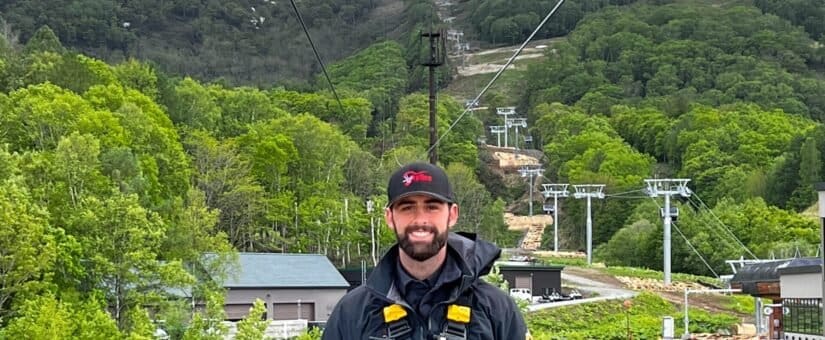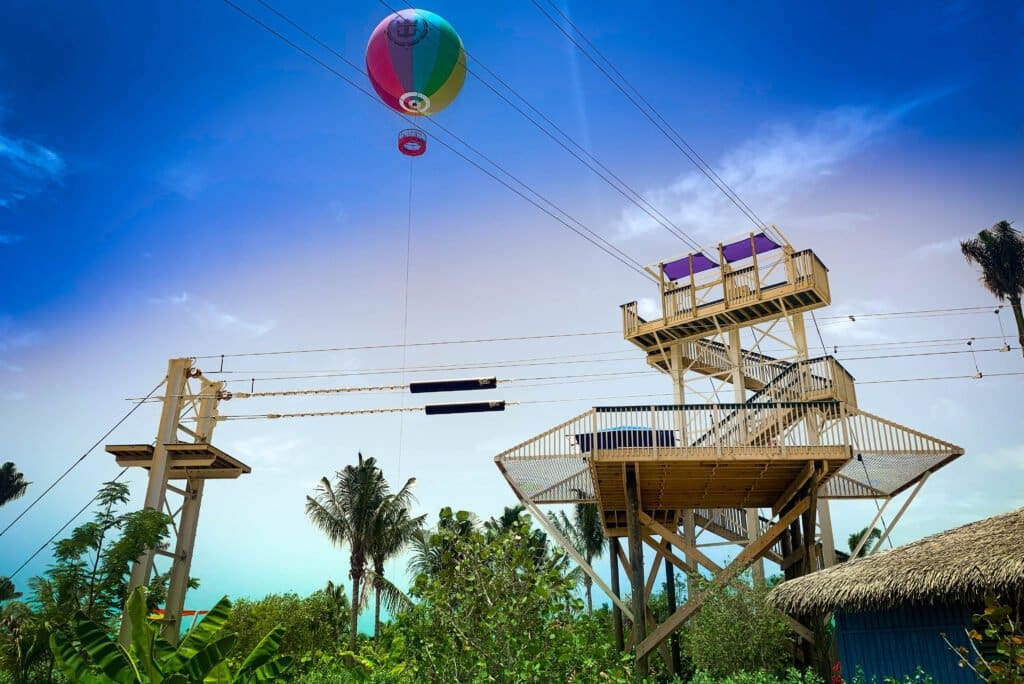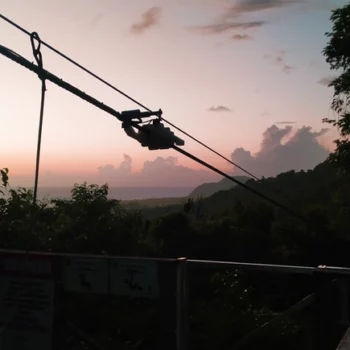
Skyline: Pioneering the Zipline Industry Amidst Imitation
The Art of Distinctive Zipline Innovations From the Premier Zipline Installers

In the ever-evolving world of adventure and adrenaline, ziplining has soared to new heights, captivating the hearts of thrill-seekers worldwide. Within this exhilarating industry, one name has consistently stood out as a beacon of innovation and excellence: Skyline. As a true pioneer zipline installer in zipline design and technology, we’ve carved a path of distinction that has not only redefined the ziplining experience but has also inspired countless others to follow suit. In this blog post, we delve into the reasons behind Skyline’s industry dominance, the phenomenon of imitation, and whether we should be flattered or frustrated by the influx of copycat competitors.
Elevating Experiences, Defining Standards
Skyline’s journey began with a vision to transform the way people engage with the natural world, combining the rush of adrenaline with the awe of breathtaking scenery. Our commitment to pushing the boundaries of zipline engineering has been the cornerstone of our success. From the earliest days, our design team embraced a culture of continuous innovation, resulting in cutting-edge zipline technologies that have set the bar for the entire industry.
Our patented advancements, such as the skyTECH™ system that prioritizes comfort for the guest, maximizes the longevity of the system, and reduces noise pollution and impact in natural environments and our SafeLaunch™ technology that enhances rider safety while minimizing the risk of operator error, have become integral components of the modern ziplining experience. These innovations not only provide thrill-seekers with an unforgettable adventure but also prioritize environmental sustainability and rider well-being, setting Skyline apart as an industry leader zipline installer with a conscience.
To take it one step further, Skyline has brought a large portion of its manufacturing in-house where sustainability is at the forefront of our operations. We believe that it is our responsibility to minimize our environmental impact and contribute to a greener future. To achieve this, we have implemented several eco-friendly practices, including the use of solar power. By harnessing the power of the sun, we are able to reduce our reliance on non-renewable energy sources and decrease our carbon footprint. Additionally, we re-use, re-purpose, and/or recycle as much of our scrap material and machining byproducts as possible, including steel, aluminum, plastic, and biodegradable cutting fluids to minimize waste and conserve resources. We are committed to continuously improving our sustainability practices and setting an example for other businesses in the industry. If you wish to learn more about our shop’s creation and sustainability efforts, click the LINK.

Inspiration Breeds Imitation
The saying “imitation is the sincerest form of flattery” rings true in the zipline industry as well. It’s undeniable that Skyline’s unparalleled success and groundbreaking designs have attracted the attention of competitors eager to replicate our achievements. As the industry pioneer of zipline installations we’ve been at the forefront of a trend where several companies have begun to emulate our products and designs.
At first glance, this trend might be viewed as a testament to the impact Skyline has had on the zipline landscape. As our innovations gain traction and popularity, it’s only natural that others would seek to emulate our successes. However, this imitation also raises questions about the integrity of the industry and the value of true originality.
Flattered or Frustrated: The Dilemma
When considering the proliferation of copycat competitors, the natural emotional response can range from flattery to frustration. Let’s explore both sides of the coin:
Flattered: Skyline’s pioneering spirit has undeniably ignited a spark within the industry, inspiring others to elevate their zipline offerings. The fact that our innovations have spurred competition suggests that we’ve set a gold standard for excellence. This imitation serves as a validation of our hard work and dedication to redefining the ziplining experience. We’re proud to have influenced the industry to raise its standards, ultimately benefitting adventure enthusiasts around the globe.
Frustrated: While imitation may indeed be flattering, it’s important to acknowledge the challenges posed by copycat competitors. The zipline industry thrives on innovation, and a flood of imitations can stifle creativity and hinder the development of new, game-changing technologies. Moreover, inferior replicas can potentially compromise rider safety and diminish the overall reputation of the industry. This frustration stems from a genuine concern for the integrity of ziplining experiences worldwide.
Embracing Leadership and Shaping the Future




As Skyline, we find ourselves at a crossroads of influence and responsibility. The proliferation of imitation is a clear indication that our trailblazing efforts have left an indelible mark on the industry. It’s a testament to our commitment to pushing the boundaries of what’s possible in zipline design and technology.
In response to this phenomenon, we choose to embrace our role as industry leaders and continue to set new benchmarks for innovation. By staying true to our core values of sustainability, safety, and unmatched adventure, we will not only retain our competitive edge but also inspire others to strive for authenticity and innovation.
Navigating the Crossroads
In this juncture of flattery and frustration, Skyline finds itself at a crossroads. Do we embrace imitation as a validation of our innovative prowess, or do we pivot to reinforce our distinctiveness? The answer lies in our unwavering dedication to pushing boundaries. Our future endeavors promise to unravel unprecedented zipline adventures, ensuring that the Skyline experience remains unparalleled.

Conclusion: Forging Ahead
The zipline industry, with its soaring popularity, has witnessed the rise of countless competitors hoping to capture the magic that Skyline has introduced. While the influx of imitation might evoke a mix of emotions, it is ultimately a reflection of our influence and leadership within the industry. As the pioneers of cutting-edge zipline technologies, we stand at the helm of progress, charting a course toward a future where innovation and authenticity reign supreme. So, should we be flattered or frustrated by the imitation? Let’s choose to be flattered, for imitation is the sincerest form of validation that Skyline has truly become synonymous with excellence in the world of ziplining.
Written by Isiah Smith, Avid Adventurer and President at Skyline
- Posted by Noah Smith
- On April 26, 2023


